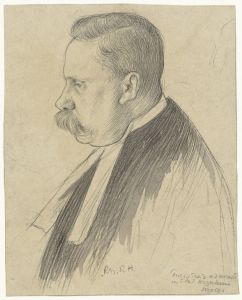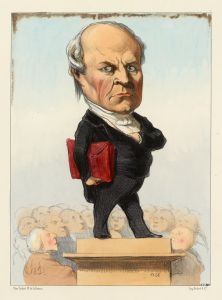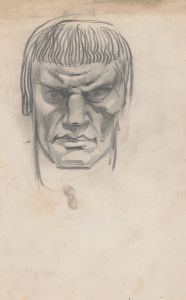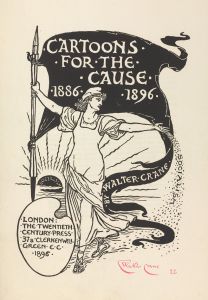
James Weldon Johnson
A hand-painted replica of Winold Reiss’s masterpiece James Weldon Johnson, meticulously crafted by professional artists to capture the true essence of the original. Each piece is created with museum-quality canvas and rare mineral pigments, carefully painted by experienced artists with delicate brushstrokes and rich, layered colors to perfectly recreate the texture of the original artwork. Unlike machine-printed reproductions, this hand-painted version brings the painting to life, infused with the artist’s emotions and skill in every stroke. Whether for personal collection or home decoration, it instantly elevates the artistic atmosphere of any space.
Winold Reiss's portrait of James Weldon Johnson is a notable example of early 20th-century American portraiture that captures the likeness of one of the most influential figures of the Harlem Renaissance. James Weldon Johnson (1871–1938) was a prominent African American writer, educator, lawyer, diplomat, and civil rights activist. He is best known for his leadership in the National Association for the Advancement of Colored People (NAACP) and for his literary contributions, including the lyrics to "Lift Every Voice and Sing," often referred to as the Black national anthem.
Winold Reiss (1886–1953), a German-born artist, was renowned for his portraits that celebrated cultural diversity. Reiss immigrated to the United States in 1913 and became known for his depictions of African Americans, Native Americans, and other underrepresented groups in American art. His work often sought to challenge racial stereotypes and present his subjects with dignity and individuality.
The portrait of James Weldon Johnson was created as part of Reiss's broader efforts to document key figures of the Harlem Renaissance, a cultural movement during the 1920s and 1930s that celebrated African American art, literature, and music. Reiss's portraits were frequently featured in publications such as The New Negro: An Interpretation (1925), an anthology edited by Alain Locke that highlighted the intellectual and artistic achievements of African Americans during this period. It is likely that the portrait of Johnson was included in this context, as Reiss contributed several illustrations to the anthology.
In this portrait, Reiss employs his characteristic style, which combines realism with bold, vibrant colors and geometric patterns. This approach reflects his training in European art traditions while also incorporating modernist influences. The result is a striking and respectful representation of Johnson, emphasizing his intellectual presence and cultural significance.
Reiss's work, including his portrait of James Weldon Johnson, remains an important part of American art history for its role in documenting the individuals who shaped the Harlem Renaissance and for its progressive approach to representation. The portrait serves as a visual testament to Johnson's legacy and Reiss's commitment to portraying the diversity of American society.











![Designs and photographs for alterations to St. James Bar Restaurant, W. 181st St. and Broadway, New York, NY.] [Incomplete study of exterior elevation](/imgs/249307/s/winold-reiss-designs-and-photographs-for-alterations-to-st-james-bar-restaurant-w-181st-st-and-broadway-new-york-ny-incomplete-study-of-exterior-elevation-15d88bd6.jpg)
![Exhibit design with stage in form of folding screen.] [Sketch of exhibit with modern chairs and tables](/imgs/249343/s/winold-reiss-exhibit-design-with-stage-in-form-of-folding-screen-sketch-of-exhibit-with-modern-chairs-and-tables-b25d6d6d.jpg)

![Interior designs for screens and ceilings.] [Drawing of plans, elevation, and details](/imgs/249429/s/winold-reiss-interior-designs-for-screens-and-ceilings-drawing-of-plans-elevation-and-details-228c6d94.jpg)



